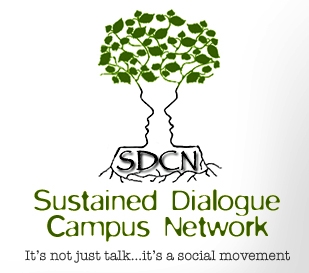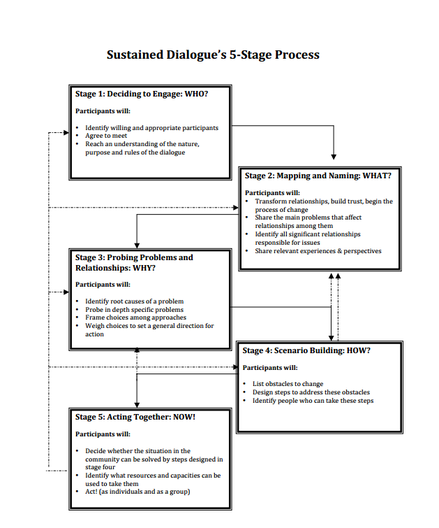Look, you can’t study the entire time. And although I believe you when you say that holing up in your dorm room with some friends to play video games or binge-watch Game of Thrones are ways of socializing, that’s not something you can add to your resume.
Whether you plan on looking for a job, applying for graduate school, or seeking funding, you need to build a competitive resume while in school.
Strategic resume building as a college or grad student includes focusing on one or two activities and demonstrating an ongoing commitment through increased involvement over time. Perhaps you start out as a participant your freshman year, and graduate as the club’s treasurer. Or you offer to help with event planning and fundraising. Maybe you even team up with students from other schools, and expand your organization to include other campuses.
I want to highlight two national organizations available at some of the nation’s leading universities, emphasizing the advantages of joining these or starting your own.
Whether you plan on looking for a job, applying for graduate school, or seeking funding, you need to build a competitive resume while in school.
Strategic resume building as a college or grad student includes focusing on one or two activities and demonstrating an ongoing commitment through increased involvement over time. Perhaps you start out as a participant your freshman year, and graduate as the club’s treasurer. Or you offer to help with event planning and fundraising. Maybe you even team up with students from other schools, and expand your organization to include other campuses.
I want to highlight two national organizations available at some of the nation’s leading universities, emphasizing the advantages of joining these or starting your own.
Sustained Dialogue Campus Network (SDCN)
SDCN’s mission is to develop everyday leaders who engage differences as strengths to improve campuses, workplaces, and communities.
WHAT IT IS
Sustained Dialogue is about conflict resolution through effective communication. Too often that which is foreign to us is interpreted as a threat. We see this in the context of international crises all the time. But students know this also happens on campus. People elect to self-segregate in the dining hall, in the classroom, or in dorms. Perceived differences sometimes manifest themselves as rivalries, or, worse, enmity. Sustain Dialogue is a tool to mitigate conflict by altering our perception of those we deem foreign, different, "other." The premise is to keep talking, because it is through conversation the unknown becomes familiar.
SDCN'S HISTORY
Sustained Dialogue Campus Network is the invention of Dr. Harold Saunders, a conflict resolution expert with over 40 years of experience. In the 1980s Dr. Saunders served as the Deputy Assistant Secretary of State to Henry Kissinger, helping mediate the Arab-Israeli peace agreements. In 1992 Dr. Saunders implemented the 5-Stage Process of Sustained Dialogue in Tajikistan, after the dissolution of the Soviet Union prompted a civil war.
In 1999 Princeton students began drawing on Sustained Dialogue to navigate issues associated with race relations on campus. In 2002 Dr. Saunders founded the International Institute for Sustained Dialogue (IISD), and the program spread to the University of Virginia and Dickinson College. SDCN is now a high priority for the IISD, teaching future leaders how to resolve conflict and establish relationships through continued dialogue.
WHAT STUDENTS DO
Lets say you hear about this SD thing on campus and decide to check it out. An organizer tallies up participants and breaks them into small groups of 5-8, with 1-2 moderators. This is your core group, which will meet on an ongoing basis for the remainder of the year. The moderator is there to provoke discussion, as well as facilitate communication when group members are nervous, angry, or unsure of what to say. The participants are deliberately matched so as to challenge each other. Groups are meant to self-direct the topics of conversation, with an emphasis on identifying and addressing problems on campus related to racism, sexism, homophobia, or other forms of conflict.
Meetings can get tense - crying, angry words, or silence - but the point is to keep talking through the uncomfortable moments.
WHY IT'S WORTH LOOKING INTO
I was a member of Notre Dame’s Sustained Dialogue chapter during my undergraduate years, starting as a participant and then working my way up into a leadership position. In 2007 I attended the annual training at Princeton University, where I met the organization’s founders and heard more about SDCN’s vision for the future. This includes expanding SDCN chapters to more college campuses, changing the way future leaders understand and approach conflict.
My SDCN training stayed with me long after Notre Dame. The emphasis on conflict resolution prepared me for navigating difficult conversations with family members, ornery professors, and demanding clients. Trust me - when SDCN is on your resume, someone will ask you about it during an interview.
Prospective graduate schools and employers are usually intrigued by the concept and impressed with SDCN’s ability to prepare people to be leaders who leverage diversity to improve our communities and workplaces.
Lets say you hear about this SD thing on campus and decide to check it out. An organizer tallies up participants and breaks them into small groups of 5-8, with 1-2 moderators. This is your core group, which will meet on an ongoing basis for the remainder of the year. The moderator is there to provoke discussion, as well as facilitate communication when group members are nervous, angry, or unsure of what to say. The participants are deliberately matched so as to challenge each other. Groups are meant to self-direct the topics of conversation, with an emphasis on identifying and addressing problems on campus related to racism, sexism, homophobia, or other forms of conflict.
Meetings can get tense - crying, angry words, or silence - but the point is to keep talking through the uncomfortable moments.
WHY IT'S WORTH LOOKING INTO
I was a member of Notre Dame’s Sustained Dialogue chapter during my undergraduate years, starting as a participant and then working my way up into a leadership position. In 2007 I attended the annual training at Princeton University, where I met the organization’s founders and heard more about SDCN’s vision for the future. This includes expanding SDCN chapters to more college campuses, changing the way future leaders understand and approach conflict.
My SDCN training stayed with me long after Notre Dame. The emphasis on conflict resolution prepared me for navigating difficult conversations with family members, ornery professors, and demanding clients. Trust me - when SDCN is on your resume, someone will ask you about it during an interview.
Prospective graduate schools and employers are usually intrigued by the concept and impressed with SDCN’s ability to prepare people to be leaders who leverage diversity to improve our communities and workplaces.
Getting Involved
There are a few ways you can participate in SDCN:
Check out Part II, detailing how two former SDers from Princeton started their own national organization, Students For Education Reform.
- See if SDCN has a program on your campus and become a member
- Initiate a chapter on your campus
- Apply for a job, internship, or volunteer position with SDCN
Check out Part II, detailing how two former SDers from Princeton started their own national organization, Students For Education Reform.



